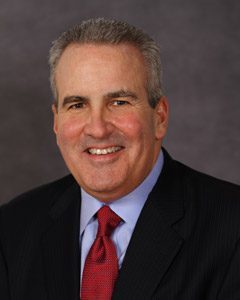
By Bob Happy, President, Averill Fundraising Solutions
For nonprofits large and small, feasibility studies are a staple of most of your major fundraising efforts. Whether you’re planning a capital campaign or creating a new annual fundraising plan, conducting a feasibility study is generally seen as a cornerstone of campaign planning.
Yet, although most nonprofits agree on the importance of these studies, not all understand the huge impact they should have on the planning phase of your campaign from the very beginning.
Instead of thinking of feasibility studies as just one rung in the planning phase ladder, it’s time to start treating these projects as planning phases in and of themselves.
When your feasibility studies shape the course of campaign planning from the outset, there’s no limit to what your nonprofit can achieve. In this article, we’ll dive into the ways your nonprofit can jump start the benefits of feasibility studies by incorporating them as a holistic element of the campaign planning process.
Follow these key steps to conduct more dynamic fundraising feasibility studies:
- Take a step back and focus on fundraising objectives.
- Enlist the expertise of a fundraising consultant.
- Build a list of dependable stakeholders.
- Have your fundraising consultant lead the study.
- Compare expectations to the results of the study.
Ready to change the way your nonprofit’s feasibility studies shape your campaign planning process? Let’s dive into these effective strategies!


Whether your fundraising goals are unclear or your pathway to achieving those goals is undefined, your nonprofit could benefit from revisiting its fundraising strategy.
This is why fundraising feasibility studies are so popular, especially when planning particularly ambitious fundraising campaigns However, revitalizing your fundraising strategy shouldn’t be left to the late stages of your campaign planning phase.
Start addressing cornerstone strategy challenges early on in the campaign planning process by conducting a kind of preliminary feasibility study.
Meet with your staff and board members to complete an informal strategy review to start off your campaign planning period. This way, you’ll have a sense of where your team stands and what issues you’ll want to address later on during your official study and throughout the entire planning process.
You should review the following questions with your team:
- Where have your past fundraising campaigns and events fallen short? In the past, your team may have struggled to reach your fundraising goal. Or perhaps you ran into difficulty building a robust prospect list. Knowing the core challenges your nonprofit faces is necessary to conducting an effective feasibility study.
- What improvements need to be made to your fundraising strategy? Before launching into the study, get a sense of where your team members think the bulk of your strategic issues stem from. They may be onto something, or they might be missing bigger issues that have fallen off their radar.
- How does your nonprofit want to see the campaign play out? Aside from reaching your fundraising goals, what kind of impact does the team want to see at the end of your proposed campaign? This might relate to growing your fundraising capacity, reaching new supporters, or building relationships with corporate sponsors.
Having a general idea of how internal members of your nonprofit feel about your current fundraising strategy will help guide the fundraising feasibility process moving forward.
While this is just a preliminary planning exercise, it can offer useful insights to leverage when conducting the study and planning elements of your proposed campaign.


After conferring with your nonprofit’s staff, the next way to boost the effectiveness of your planning phase is to hire a fundraising consultant to conduct your official feasibility study and oversee the planning period moving forward.
Not only can a fundraising consultant lead the way for a successful fundraising feasibility study, but building a relationship with a consultant at this stage can set your fundraising strategy up for success in the long term.
Whether they help direct your fundraising campaign or offer ad hoc services as the fundraising calendar goes on, you’ll be able to count on having them as a partner to help your team navigate challenges as they arise.
Here’s how your nonprofit should begin a partnership with a fundraising consultant:
- First, do your research. Since a partnership with a best-fit fundraising consultant can stand the test of time, conducting extensive research is key. Ask members of other nonprofit organizations if they have any recommendations, and search databases of fundraising consulting firms to build a list of possible partners.
- Next, choose a pool of contenders. You’ll want to narrow your list based on factors like experience level, the prestige of the firm, the services they offer, and their general price points. Create a list of around 5-10 fundraising consultants for further research, and then refine this list to just a handful of stand-out options.
- Then, reach out to your top choice. At this stage, you’ll extend a Request for Proposal (RFP) to your favorite fundraising consultant. This will introduce the consultant to your organization and call on them to outline how they could enhance your nonprofit’s fundraising efforts.
Bonus! One way a fundraising consultant could help plan your next fundraising campaign is by analyzing your contributor retention strategy. If they find your approach needs a boost, they might prescribe revitalized retention strategies like these suggested by Qgiv.


For your formal fundraising feasibility study to yield meaningful results, you’ll need to carefully choose individuals for your stakeholder interviews. These shouldn’t simply be members of your staff or prospective givers, but a diverse array of dependable individuals.
The stakeholder interview period isn’t just a useful way to learn about how these individuals perceive your proposed annual campaign, capital campaign, or other fundraising project.
Rather, think of it as a useful engagement tool to help strengthen ties between these essential supporters and your nonprofit during campaign planning.
When you bring stakeholders in on the ground floor of your campaign as central elements of the campaign planning process, you can trust that the campaign you plan will be tailor-made for their future support.
To start your official feasibility study interviews off right, work with your consultant to build a list of stakeholders who you’ll invite to be a part of your fundraising feasibility study and the overall campaign planning phase.
Be sure to explain to these individuals the function of the study, their role in it, and how their feedback is necessary to strengthening your organization. Include the following individuals on your stakeholder list.
- Board members
- Staff
- Givers
- Volunteers
- Community members
- Peers at other nonprofits
- Corporate partners
Once you’ve got a list, your fundraising consultant will draft a set of interview questions. These should get at the heart of how these individuals relate to your cause, what motivates them, and why they’re inspired by your proposed fundraising campaign—or why they’re not.
Bonus! What’s one great way to choose influential stakeholders for your study? Consult giving analytics to get a broad view of who is giving, how much they’re contributing, when they’re inspired to give, and other helpful information.


When the time comes to conduct the formal feasibility study, your fundraising consultant should take the lead. Since they aren’t an internal member of your team, stakeholders will feel more free to offer up feedback than if a staff member ran the interviews.
Additionally, your consultant will feel comfortable asking tough questions of your stakeholders that members of your team may not know how to approach.
During the interview process, your consultant may ask stakeholders questions similar to these:
- How does the work of this nonprofit influence your day-to-day life?
- What is your level of involvement with other nonprofit organizations?
- Does this nonprofit’s mission inspire you?
- Do you feel the proposed campaign is worthy of your support?
- Are factors including the fundraising goal and campaign timeline reasonable?
- Can we count on you to make a gift? Volunteer? Help connect us with other givers?
Once the interviews close out, your consultant will gather the results and take some time to analyze them. This stage should be conducted carefully and may take some time. When the consultant has finished their review, they’ll present their findings to your team.
Bonus! Looking for more fundraising feasibility study questions? Check out Averill Fundraising Solutions’ list of the top fundraising feasibility study questions before you launch your next study. Learn all you need to know to ask the right questions of your stakeholders.


At the end of your fundraising feasibility study, you’ll confer with your consultant and go over their analysis. Additionally, your consultant will outline a series of next steps for your nonprofit that will help address issues that came to light during your feasibility study.
During this stage, ask your team: are these the results we were looking for? How do these findings match up with our initial expectations of how our proposed fundraising plan would perform?
Even though fundraising feasibility studies are among the most common services provided by consultants to nonprofits, all too many organizations hesitate to take effective action once their study concludes.
However, when your nonprofit considers feasibility studies to be an intrinsic part of the campaign planning process, it’s difficult to lose sight of how impactful the results are on your fundraising strategy and proposed campaign.
When the results come in, your team will be better prepared to make the necessary changes because the study itself wasn’t a tacked on, standalone step of the planning process. Rather, since you’ve been addressing the feasibility of your campaign plan from the beginning, you’ll already have an idea of how to take the next steps to prepare for the campaign you envision.
This may mean that your team needs to pause your proposed campaign while you get things in order behind the scenes. Or, you could simply adjust aspects of your plan (like your goals, campaign timeline, data strategy, etc.) to be more realistically achievable.
The bottom line? Ensure that your feasibility study is a fully integrated element of your planning phase and not a cursory element of the campaign planning checklist.
While this may seem like a difficult change to make if your nonprofit is used to considering these studies as discrete steps in the planning process, you’ll be thankful later on when your nonprofit starts building fundraising capacity faster and reaching ambitious goals quicker than ever.
If your nonprofit wants to revolutionize the way you plan fundraising campaigns, changing your approach to fundraising feasibility studies is a must.
By integrating your feasibility early on during the campaign planning period (rather than at the tail end of it), you’ll get more out of the campaign planning process and hit more fundraising bullseyes than ever before!
About the Author
Bob Happy brings nearly 35 years of experience providing expert leadership and direction to clients across the not-for-profit sector to his current role as President of Averill Solutions. Before forming Averill Solutions, Bob served as the Executive Vice President and Chief Operating Officer of the nation’s largest fundraising firm. He has mentored hundreds of professional fundraising practitioners and many have joined him at Averill Fundraising Solutions.


